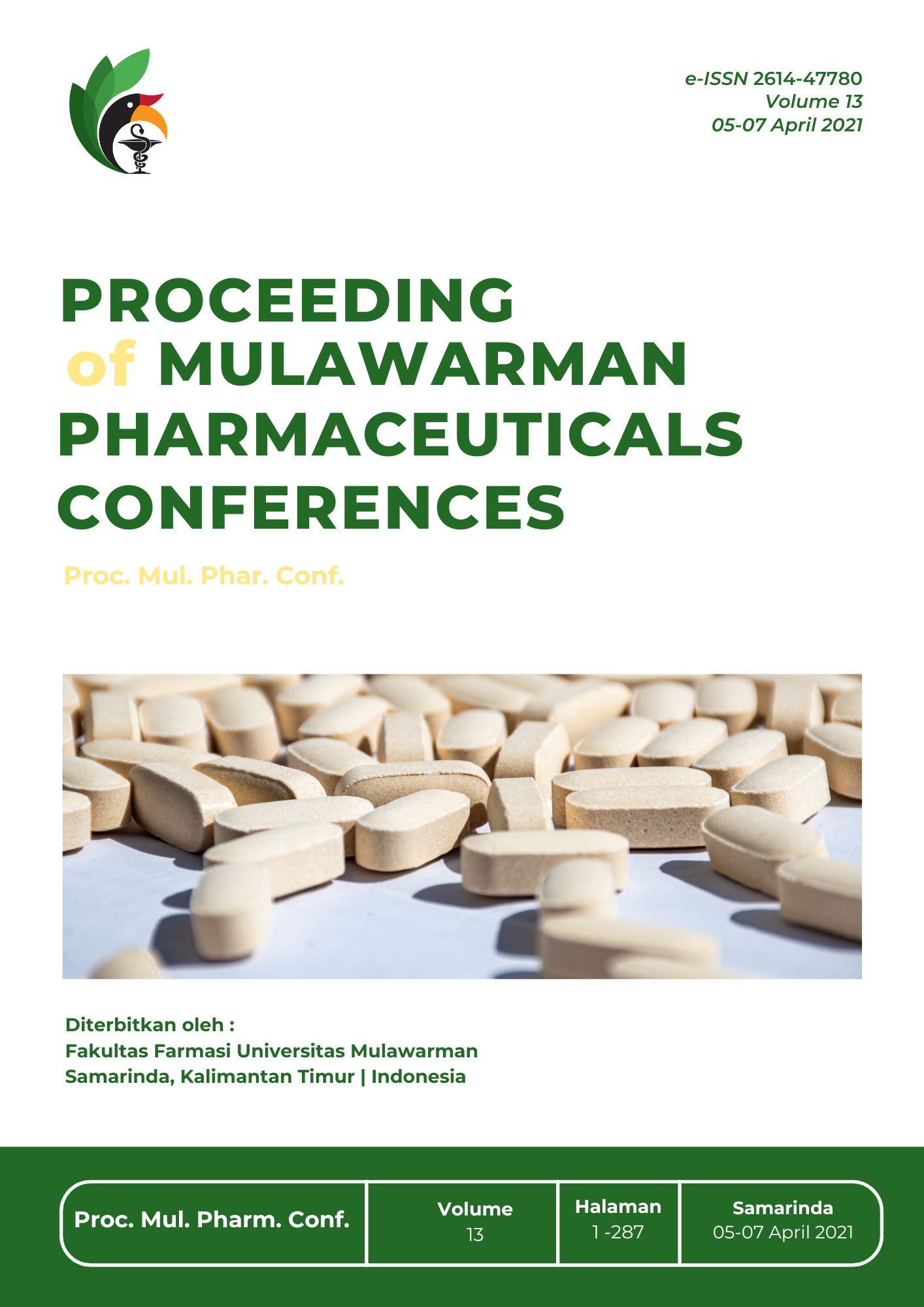Formulation and Physical Quality Test of Provision of Body Scrub from Rice Husb Active Character (Oryza sativa)
DOI:
https://doi.org/10.30872/mpc.v13i.349Keywords:
Rice Husk Activated Charcoal, Physical Quality Test, Body ScrubAbstract
Rice husk (Oryza sativa) has a high content of activated carbon, activated charcoal is able to open clogged pores and improve skin cleansing by removing dead skin on the surface. Activated charcoal rice husk formulated sebagai scrubs using stearic acid, cethyl alcohol, and propilenglikol. Scrub as a scrub to remove dead skin cells using amylum oryzae. The concentration of activated rice husk charcoal used was 0% in the control formula, 8 % in formula I, 10% in formula II, and 12% in formula III. Evaluation Physical quality of body scrub based on parameters such as organoleptic, homogeneity test, pH test, spreadability test, adhesion test, emulsion type test. Body scrubs activated charcoal rice husk has a stable pH 7. Dispersibility formulation is 5,7cm, 5,8cm, 5,6cm. Rice husk activated charcoal body scrub is stable in room temperature storage or low temperature (2-8?C). All formulations evenly distributed homogeneously have stable color, smell and taste. Rice husk activated charcoal (Oryza sativa) can be formulated into a stable body scrub that meets the requirements. The most stable formulation was formulation 1 with a concentration of rice husk activated charcoal (Oryza sativa) of 8%.
References
[1] Bhakti, C.P, Ghafur, AL, Setiawan, R.A, Widodo, A. 2019. Pelatihan Dan Pemanfaatan Sekam Padi Menjadi Bahan Bakar (Briket) Di Desa Kemranggon, Kecamatan Susukan Kabupaten Banjarnegara, Universitas Ahmad Dahlan, Yogyakarta.
[2] Mamnu?ah, S.M, Mustikasari W.M. 2019. Masker Arang Aktif Sekam Padi, Institut Teknologi Bandung, Bandung.
[3] Fahruri, F. Megasari, D.S. 2020. Pengaruh Pengaplikasian Masker ?Activated Charcoal? Untuk Mengurangi Kadar Sebum Paa Kulit Wajah Berminyak, Fakultas Teknik Universitas Negeri Surabaya, e-jurnal, Volume 09 Nomer 2, hal 147-156.
[4] Lestari, K., D., Ratnani, R., D., Suwardiyono,S., 2017, Pengaruh Waktu Dan Suhu Pembuatan Karbon Aktif Dari Tempurung Kelapa Sebagai Upaya Pemanfaatan Limbah Dengan Suhu Tinggi Secara Pirolisis, Jurusan Teknik Kimia, Fakultas Teknik, Universitas Wahid Hasyim Semarang.
[5] Depkes RI. 1995. Farmakope Indonesia Edisi IV. Jakarta: Dirjen POM Depkes RI.
[6] SNI. 1996. SNI. 16-4399-1996 Sediaan Tabir Surya. Dewan Standarisasi. Nasional. Jakarta.
[7] Nova, G. D. 2012. Formulasi Ekstrak Metanol Kulit Manggis (Garcinia mangostana L) Pada Uji Iritasi Primer. Skripsi. Fakultas Farmasi Universitas Sanata Dharma, Yogyakarta
[8] Garg, A., D. Aggarwal, S. Garg, and A. K. Sigla. 2002. Spreading of Semisolid Formulation: An Update. Pharmaceutical Tecnology. September: 84-102.
[9] Tranggono, R.I.S dan Latifah, F. (2007). Buku Pegangan Ilmu Pengetahuan Kosmetik. Jakarta: Gramedia Pustaka Utama. Hal. 7-8, 93-96.
[10] Syamsuni H.A., 2006, Ilmu Resep, EGC, Jakarta.
[11] Ansel, H.C., 1989, Pengantar Bentuk Sediaan Farmasi, diterjemahkan oleh Farida Ibrahim, Asmanizar, Iis Aisyah, Edisi keempat. Jakarta, UI Press. Hal , 255-271, 607-608, 700.
Downloads
Published
Issue
Section
License
Copyright (c) 2021 Chelsie Onesya Prolapita, Cikra Ikhda Nur Hamidah Safitri (Author)

This work is licensed under a Creative Commons Attribution-NonCommercial 4.0 International License.


